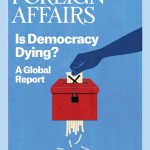“Sooner or later this economy will slow,” the New York Times columnist Thomas Friedman declared of China in 1998. He continued: “That’s when China will need a government that is legitimate. . . . When China’s 900 million villagers get phones, and start calling each other, this will inevitably become a more open country.” At the time, just a few years after the fall of the Soviet Union, Friedman’s certainty was broadly shared. China’s economic ascent under authoritarian rule could not last; eventually, and inescapably, further economic development would bring about democratization.
Twenty years after Friedman’s prophecy, China has morphed into the world’s second-largest economy. Growth has slowed, but only because it leveled off when China reached middle-income status (not, as Friedman worried, because of a lack of “real regulatory systems”). Communications technology rapidly spread—today, 600 million Chinese citizens own smartphones and 750 million use the Internet— but the much-anticipated tsunami of political liberalization has not arrived.
YUEN YUEN ANG is Associate Professor of Political Science at the University of Michigan and the author of How China Escaped the Poverty Trap.
This article appeared in the Foreign Affairs 2018 May/June edition. It is republished here with permission.
This article was originally published by Foreign Affairs. You can read the rest of the article here.
You can read exclusive content from Gateway House: Indian Council on Global Relations, here.
Copyright © 2018 by the Council on Foreign Relations, Inc.


